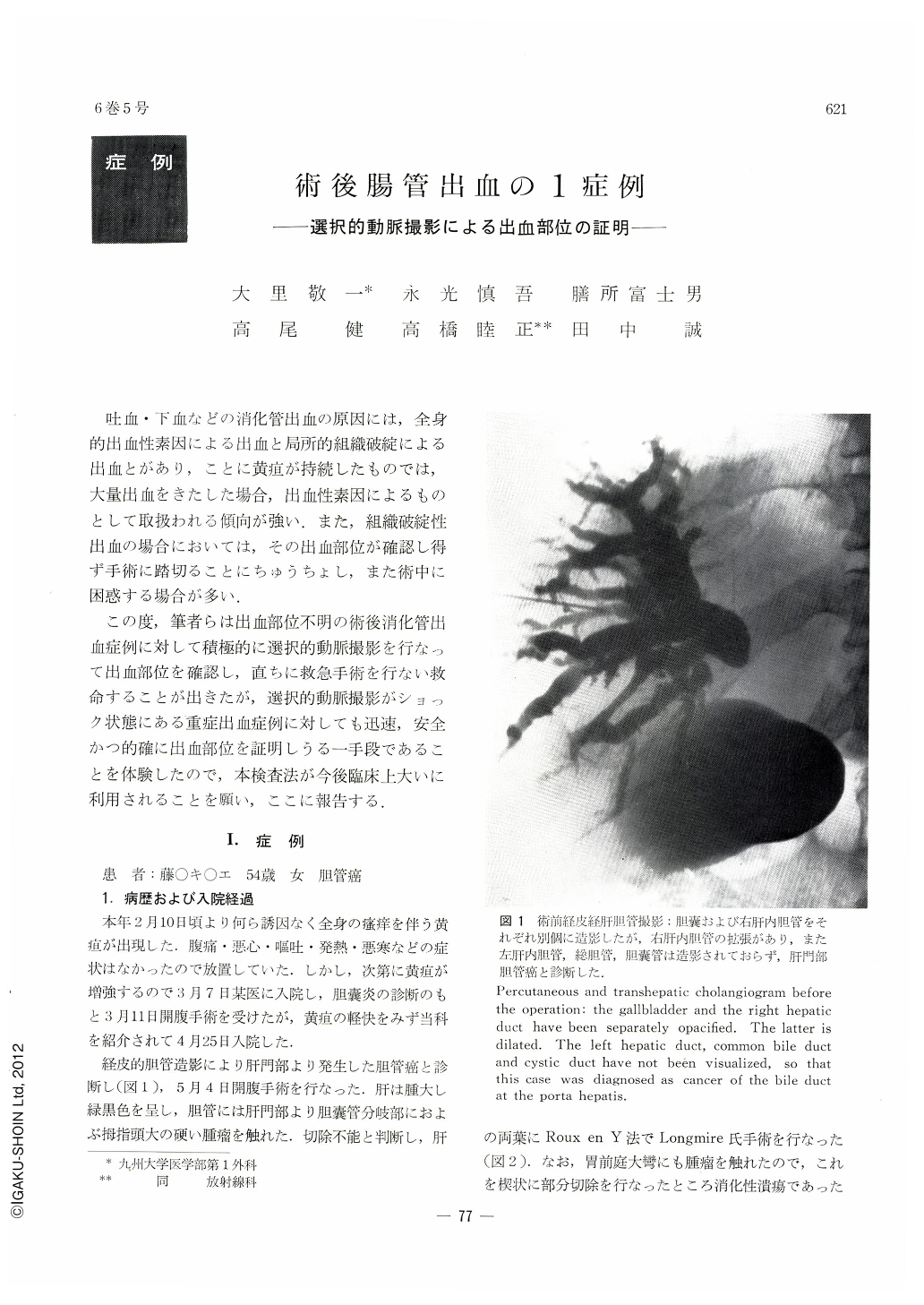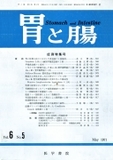Japanese
English
- 有料閲覧
- Abstract 文献概要
- 1ページ目 Look Inside
吐血・下血などの消化管出血の原因には,全身的出血性素因による出血と局所的組織破綻による出血とがあり,ことに黄疸が持続したものでは,大量出血をきたした場合,出血性素因によるものとして取扱われる傾向が強い.また,組織破綻性出血の場合においては,その出血部位が確認し得ず手術に踏切ることにちゅうちょし,また術中に困惑する場合が多い.
この度,筆者らは出血部位不明の術後消化管出血症例に対して積極的に選択的動脈撮影を行なって出血部位を確認し,直ちに救急手術を行ない救命することが出きたが,選択的動脈撮影がショック状態にある重症出血症例に対しても迅速,安全かつ的確に出血部位を証明しうる一手段であることを体験したので,本検査法が今後臨床上大いに利用されることを願い,ここに報告する.
There are two types of causes of postoperative hemorrahge in the digestive tract. The one is generalized hemorrhagic diathesis and the other is injury of vessel, such as bleeding from the anastomosed site and postoperative peptic ulcer.
A case of massive bleeding has recently encountered in a patient occurring 21 days after drainageoperation of the bile duct for cancer of the porta hepatis followed by circulatory collapse. As the patient had been suffering from intense jaundice of long duration, hemorragic diathesis due to hepatic failure had to be examined. Furthermore, local causes of bleeding had to be considered as well such as cancer lesion of the bile duct, two sites of anastomoses between the intrahepatic bile duct and the jejunum and the place of Roux-en-Y side-to-end jejunal anastomosis.
In the emergency case such as the pateint in this case, an imprudent exploratory laparotomy under the insufficient cliniical data should be avoided, because both the cause and site of bleeding remain unaccounted for. Therefore, while trying to improve general condition of the patient by blood transfusion, intravenous fluid infusion and oxygen inhalation, the hemostatic mechanism of the patient was examined to be negative. Then the selective angiography was performed. Bleeding point was confirmed from a blanch of jejunal artery at the site of Roux-en-Y anastomosis.
Laparotomy was done at once, directly aiming at the site of the anastomosis. The cause of bleeding was thus easily ascertained.
Retrospective study of the findings seen at the time of surgical intervention suggests that had exploratory laparotomy been performed without confirming the bleeding point, the result would have been either that the site of bleeding would be impossible to find out, or that, even if found, the operation would have faced unforeseen difficulties.
The authors are now of opinion that the importance of selective angiography in the diagnosis of hemorrhage from the digestive tract should be fully realized.

Copyright © 1971, Igaku-Shoin Ltd. All rights reserved.


